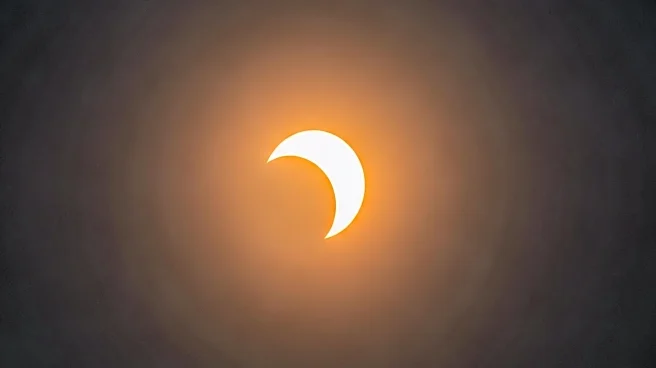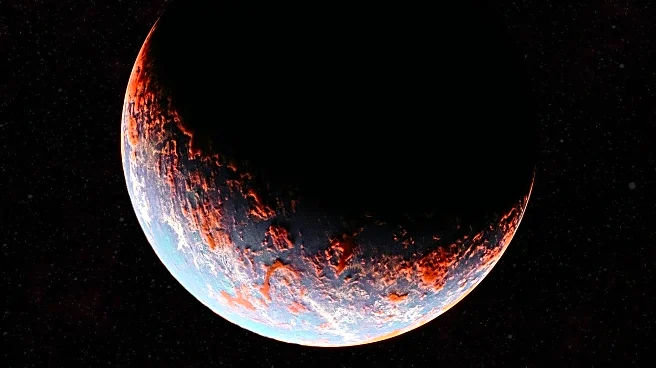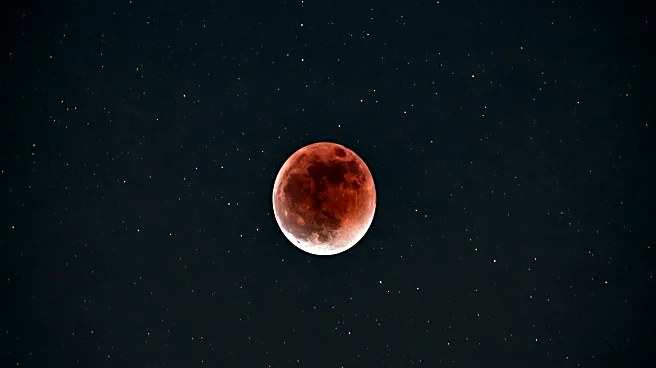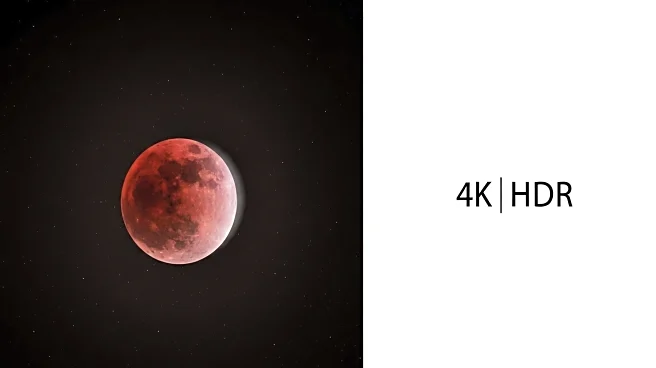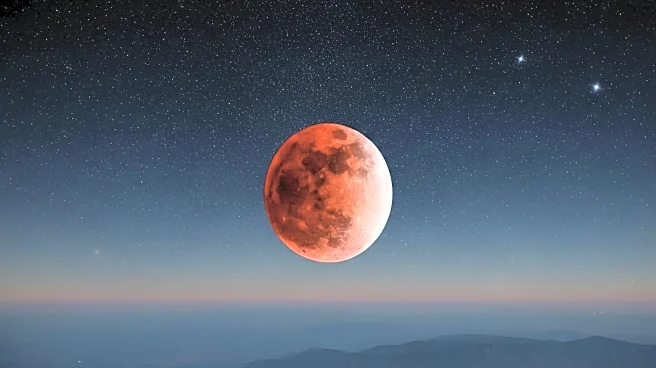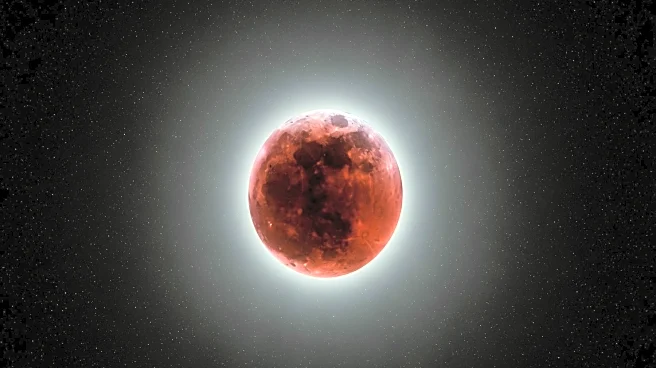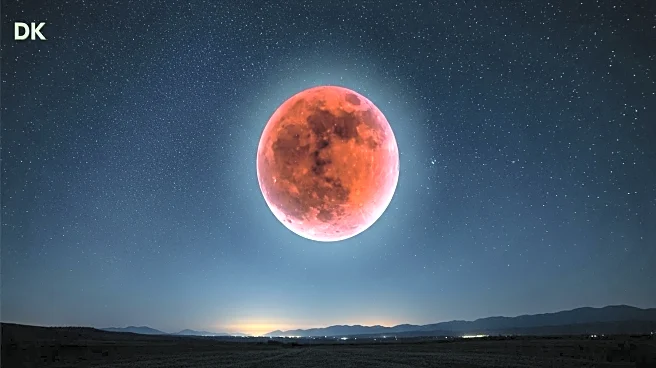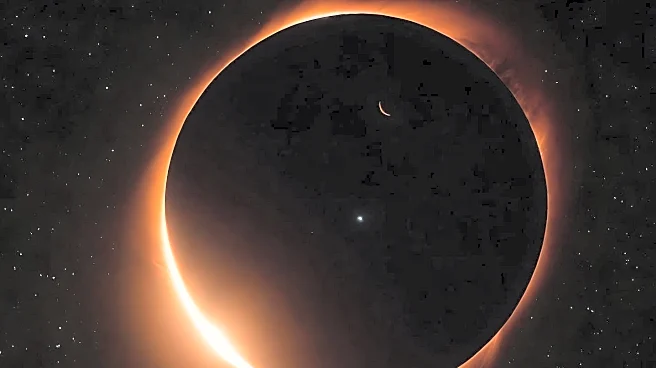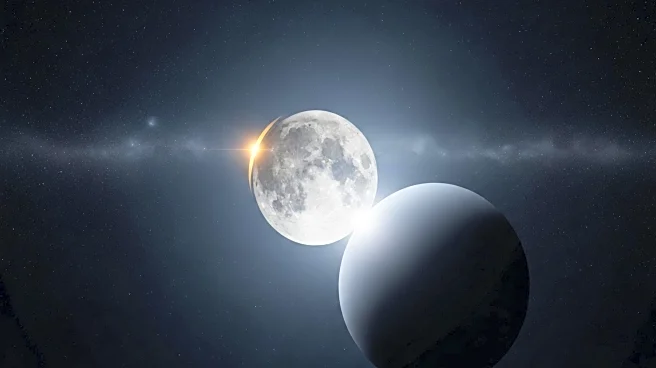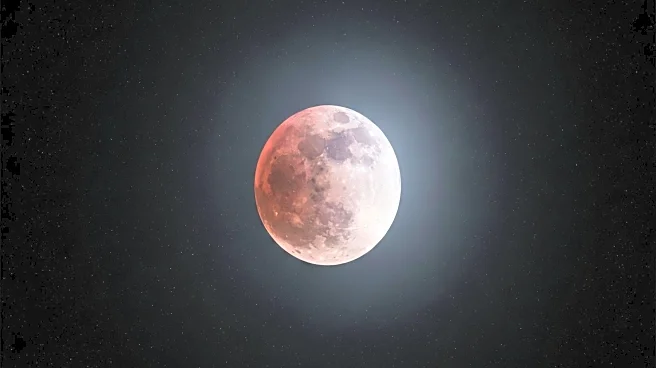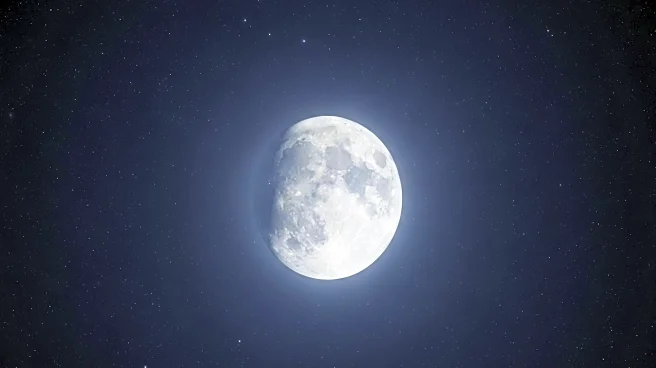What's Happening?
Skywatchers in the Americas, eastern Asia, and Australia will have the opportunity to witness a lunar eclipse on the night of March 2, 2026. This event will feature a totality phase beginning at 6:04 a.m. Eastern time on March 3, 2026, lasting for 58 minutes and 19 seconds. Two weeks prior, on February 17, 2026, an annular solar eclipse, known as a 'ring of fire' eclipse, will occur, although it will only be visible from Antarctica. Additionally, a total solar eclipse is scheduled for August 12, 2026, visible from eastern Greenland, western Iceland, and Spain, with totality lasting up to 2 minutes and 18 seconds.
Why It's Important?
These celestial events provide unique opportunities for scientific observation and public engagement with astronomy. The lunar eclipse will be visible to a large portion of the global population, offering a chance to observe the Earth's shadow on the moon. The annular solar eclipse, while less accessible, highlights the intricate dance of celestial bodies and the importance of geographical location in viewing such events. The total solar eclipse in August 2026 will attract tourists and eclipse chasers to the regions of visibility, potentially boosting local economies.
What's Next?
As these events approach, astronomers and enthusiasts will prepare for optimal viewing conditions, and educational institutions may organize public viewing events to increase awareness and understanding of these phenomena. The scientific community will likely use these opportunities to conduct research on atmospheric conditions and celestial mechanics.
